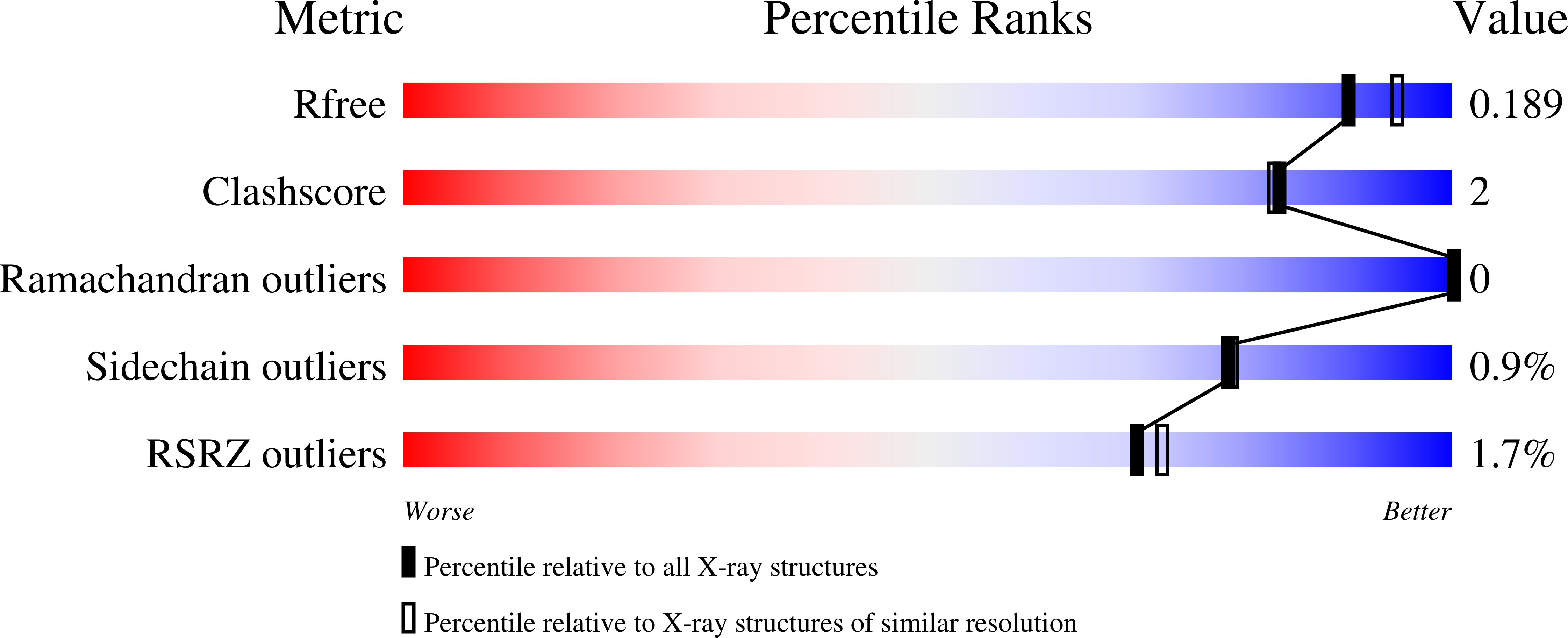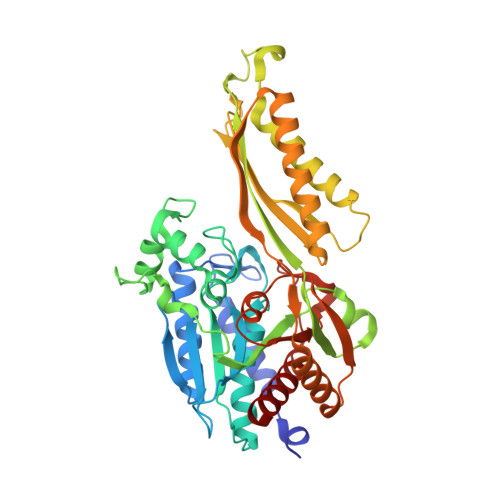Structural insights into the substrate specificity of (s)-ureidoglycolate amidohydrolase and its comparison with allantoate amidohydrolase.
Shin, I., Han, K., Rhee, S.(2014) J Mol Biol 426: 3028-3040
- PubMed: 25020232
- DOI: https://doi.org/10.1016/j.jmb.2014.06.017
- Primary Citation of Related Structures:
4PXB, 4PXC, 4PXD, 4PXE - PubMed Abstract:
In plants, the ureide pathway is a metabolic route that converts the ring nitrogen atoms of purine into ammonia via sequential enzymatic reactions, playing an important role in nitrogen recovery. In the final step of the pathway, (S)-ureidoglycolate amidohydrolase (UAH) catalyzes the conversion of (S)-ureidoglycolate into glyoxylate and releases two molecules of ammonia as by-products. UAH is homologous in structure and sequence with allantoate amidohydrolase (AAH), an upstream enzyme in the pathway with a similar function as that of an amidase but with a different substrate. Both enzymes exhibit strict substrate specificity and catalyze reactions in a concerted manner, resulting in purine degradation. Here, we report three crystal structures of Arabidopsis thaliana UAH (bound with substrate, reaction intermediate, and product) and a structure of Escherichia coli AAH complexed with allantoate. Structural analyses of UAH revealed a distinct binding mode for each ligand in a bimetal reaction center with the active site in a closed conformation. The ligand directly participates in the coordination shell of two metal ions and is stabilized by the surrounding residues. In contrast, AAH, which exhibits a substrate-binding site similar to that of UAH, requires a larger active site due to the additional ureido group in allantoate. Structural analyses and mutagenesis revealed that both enzymes undergo an open-to-closed conformational transition in response to ligand binding and that the active-site size and the interaction environment in UAH and AAH are determinants of the substrate specificities of these two structurally homologous enzymes.
Organizational Affiliation:
Department of Agricultural Biotechnology, Seoul National University, Seoul 151-921, Korea.
















